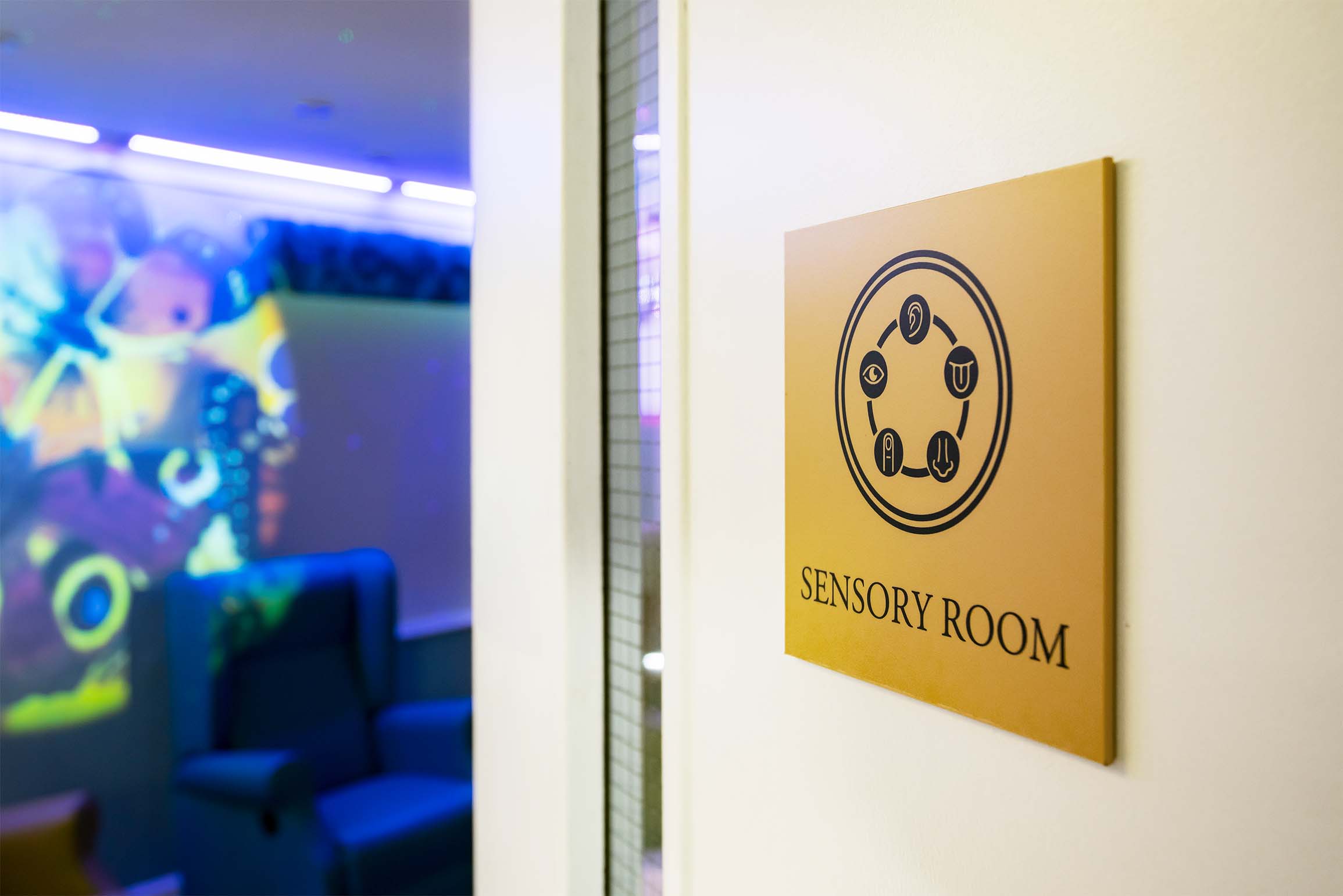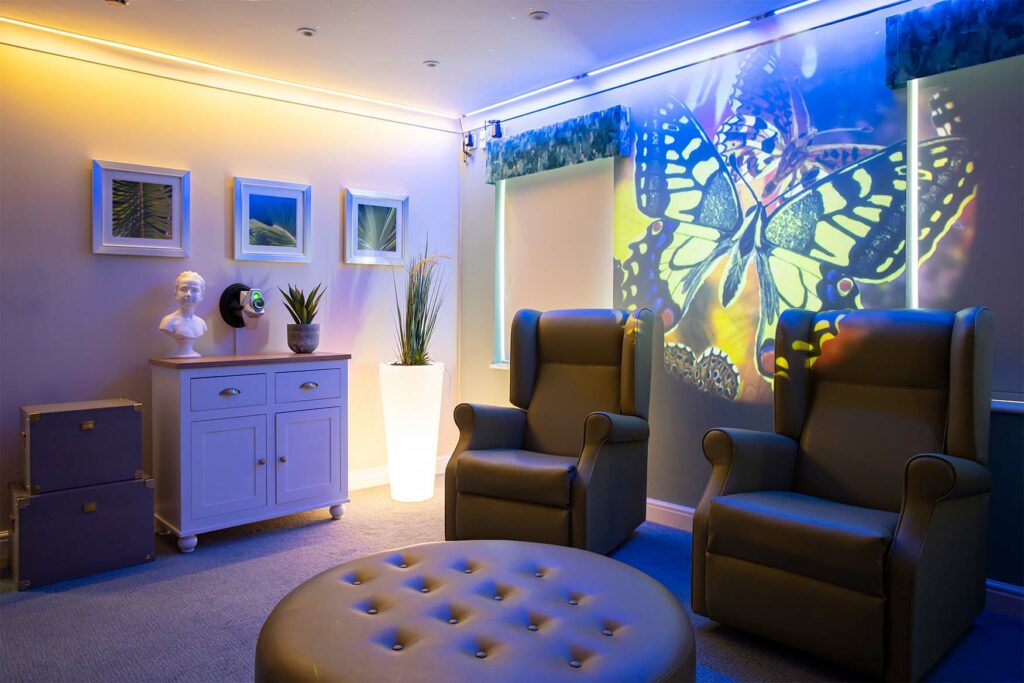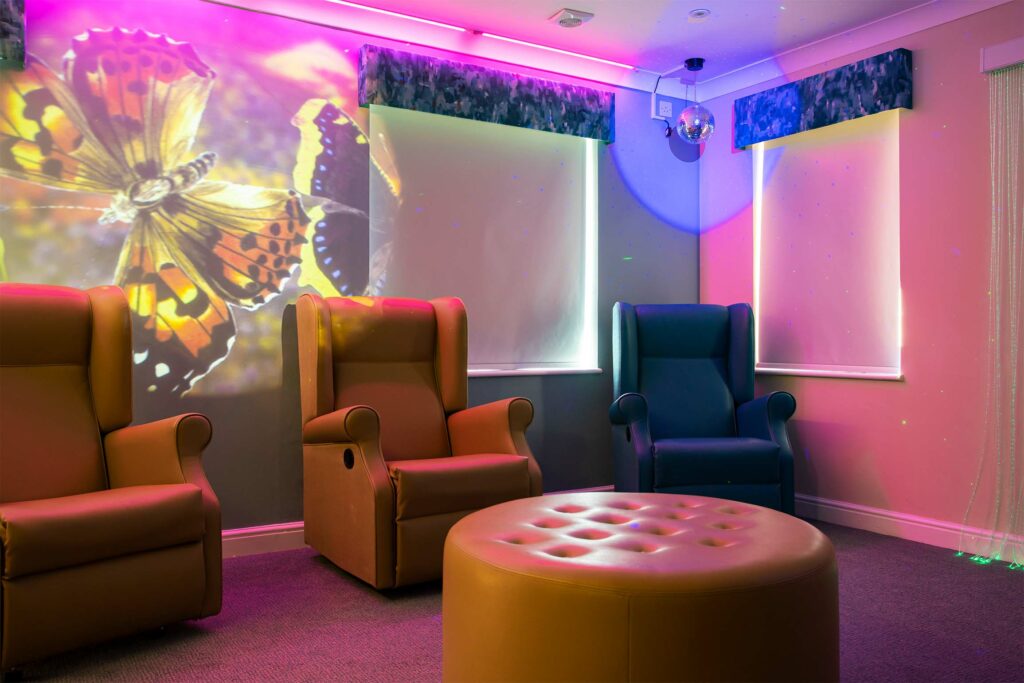How Sensory Rooms Can Support Dementia Residents

Dementia presents unique and complex challenges for both those living with the condition and those who care for them. At Hazelwood Care Home in the beautiful Kent countryside, we recognise the importance of innovative and person-centered approaches to enhance our residents' wellbeing.
Sensory rooms offer a gentle and engaging way to support those with dementia, providing moments of calm, connection, and even sparks of joy.
Understanding Sensory Rooms for Dementia
Traditional care settings can feel overwhelming for those with dementia. Sensory rooms offer a different kind of space – one designed to provide a gentle and stimulating experience for all five senses. From soothing lights to calming music to comforting textures, these elements work together to create a unique environment with powerful benefits...
Soothing Lights and Colors
- Soft lighting: Harsh, fluorescent lights can be overstimulating and contribute to agitation. Sensory rooms offer softer lighting options, such as dimmable incandescent bulbs, colored lamps, or even light projectors that create calming patterns on the walls.
- Gentle color changes: Subtle, gradual shifts in color can create a mesmerising and soothing effect. Devices like bubble tubes, fiber-optic strands, or LED light panels can offer a captivating visual experience without overwhelm.
- Connection to Nature: Projections of nature scenes (sunsets, forests, ocean waves) can be incredibly relaxing and provide a sense of tranquility.
Relaxing Sounds and Music
- Nature sounds: The gentle sounds of a flowing stream, birdsong, or ocean waves can promote relaxation and mask distracting noises that can increase anxiety in those with dementia.
- Calming melodies: Soft instrumental music, particularly without complex melodies or rhythms, creates a peaceful atmosphere. Pre-recorded options or even a simple instrument the resident can play themselves (like chimes) can be powerful tools.
- Familiar music from the past: Music has a unique ability to transport us back in time. A beloved song from a resident's youth can bring about a sense of joy, spark memories, and provide a point of connection for conversations between the resident and caregivers.
Tactile Textures
- Soft blankets: Cozy blankets with varying textures (plush, faux fur, fleece) provide comfort and a sense of security. Some weighted blankets can offer an even deeper calming pressure.
- Textured cushions and surfaces: A variety of tactile surfaces to explore – smooth, bumpy, rough, soft – provide sensory stimulation and offer points of interest. Interactive wall panels with buttons, dials, or textured fabrics can keep hands busy and engaged.
- Familiar objects: Items with personal significance, such as a favorite hairbrush or a soft, worn sweater, can offer comfort and a sense of connection to the past.
Pleasant Aromas
- Lavender for relaxation: Lavender essential oil is known for its soothing, anxiety-reducing properties. It can be diffused in the room or used in a diluted form for hand massage.
- Citrus for alertness: Citrus scents, like lemon or orange, can be lightly energising and mood-boosting.
- Aromas as memory cues: Subtle hints of familiar scents like baking bread, fresh-cut grass, or a loved one's perfume can be powerful memory triggers, but it's important to use them with careful consideration for individual preferences.
Taste Experiences
- Familiar snacks and drinks: A simple cup of tea, a well-loved cookie, or a favorite fruit can bring back fond memories and a sense of normalcy. It's important to ensure taste experiences are safe in terms of dietary needs and swallowing abilities.
- Exploring different tastes and textures: Offering small bites of varying textures and flavors (soft pudding, crunchy crackers, a tart fruit) can be a stimulating and enjoyable sensory exploration.
It's important to note that sensory rooms should always be used with observation and tailored to the individual resident's tolerances. Some people with dementia may have heightened sensitivities, so it's important to introduce elements gradually and respect their preferences.


How Sensory Rooms Benefit Dementia Residents
- Reduced Agitation and Anxiety: People living with dementia often experience confusion, disorientation, and heightened sensitivity to their surroundings. Sensory rooms, with their carefully controlled environment, offer a safe haven. Gentle lights, calming music, and soft textures can reduce overstimulation, promoting a sense of peace and lowering anxiety levels.
- Improved Mood and Wellbeing: Sensory experiences have the power to evoke positive emotions, combating apathy or depression that can accompany dementia. The soothing sound of a waterfall, the scent of lavender, or the touch of a soft blanket can trigger feelings of comfort, security, and happiness, significantly improving overall wellbeing.
- Enhanced Communication: As dementia progresses, verbal communication often becomes difficult. Sensory rooms offer a nonverbal way to connect, fostering interaction through simple choices and reactions. A resident who can't express their feelings may indicate a preference for certain music, textures, or colors, allowing caregivers to better understand their emotional state and needs.
- Memory Stimulation: Sensory cues have a way of unlocking memories, even for those with advanced dementia. The smell of freshly baked bread, a familiar song from their youth, or the feel of velvet might trigger long-forgotten moments. These reminiscences bring a sense of joy, provide opportunities for meaningful conversations, and strengthen a sense of identity.
- Opportunities for Choice and Control: Dementia gradually erodes a person's sense of control over their life. Sensory rooms offer a way to regain some of that agency. Simple choices, such as which soft blanket to use, what music to listen to, or which texture to explore, can feel empowering and provide a much-needed sense of autonomy.
Hazelwood Care Home's Approach
At Hazelwood, we understand that each resident experiences dementia uniquely. Our sensory room would be carefully designed with the following principles:
- Individualisation: There's no one-size-fits-all approach for those with dementia. Our priority is getting to know each resident's unique preferences and responses. We'll take the time to observe what kinds of colors, sounds, textures, and scents bring a sense of peace, joy, or engagement. Is it soft classical music or lively tunes from their youth? The feel of silk or a chunky knit blanket? The aroma of lavender or freshly baked cookies? These individualised details shape how we tailor their sensory room experience.
- Flexibility: Needs and preferences can change from day to day, even hour to hour, for residents with dementia. Our sensory room won't be a static space. It will be equipped to shift its atmosphere from calming to stimulating, and everything in between. A simple change like switching from nature sounds to upbeat music or dimming the lights to spotlight a colorful fiber-optic display can change the entire feel of the room and better match a resident's mood in that moment.
- Expert Guidance: A sensory room's potential is only as strong as the knowledge of how to use it effectively. Our staff will receive comprehensive training on utilising the space in a way that benefits residents, maximises safety, and is sensitive to individual needs. This includes understanding how to introduce sensory elements gradually, how to read residents' responses and adjust accordingly, and how the sensory room can be integrated into overall care plans for maximum impact.
A Commitment to Supporting Wellbeing
At Hazelwood Care Home our dedication to enriching our residents' lives shines through our modern, purpose-built facilities and our caring, expert team. A sensory room would be another valuable tool in our commitment to providing exceptional care that prioritises the whole person – physically, emotionally, and cognitively.
Contact us today to schedule a visit and learn how Hazelwood Care Home strives to make each day meaningful for those living with dementia.





